Wild About Wildlife Gardens
Here at Smithsonian Gardens, we’re WILD about wildlife—the birds, bees, insects, and helpful critters that contribute to our garden, community, and planet health. That’s why we’re so excited to announce our first Community of Gardens Community Collaborators, the National Wildlife Federation Garden for Wildlife program.
Continue Reading July 16, 2019 at 10:46 am smithsoniangardens Leave a comment
Harvesting Garden History, One Story at a Time

The Joseph Daniel Wilson Memorial Garden in New York City.
October is Archives Month, and as gardeners across the country harvest the last of their summer crops, we’re turning our attention to a different type of harvesting: preserving stories about gardens for future generations. Smithsonian Gardens’ Community of Gardens digital archive is celebrating Archives Month with a story-behind-the-story featuring a contributor to our digital archive.
Elizabeth Eggimann is an independent researcher in storytelling and landscape history. During her senior year at Pace University in New York City, she set out to document the untold stories of the community gardeners who have shaped the urban landscape of New York City. Tucked into formerly vacant lots and pockets of green between alleys and asphalt, these nook-and-cranny gardens are vibrant hubs of community energy and activism. Eggimann chose to interview a handful of current community gardeners rather than focus on an all-encompassing narrative of the complex history of urban community gardening in New York City. Their thoughts and wisdom form a snapshot of a city that is ever-changing in the face of development. Eggimann stresses that these oral histories were in many ways a collaborative endeavor. “The narrators are the authors of their stories,” she explains, “without their contribution, time, and generosity this project would not have been possible.”
We asked her to share her thoughts on the experience of embarking on an oral history project spotlighting gardens and gardeners. A few of the stories from her research are featured in the Community of Gardens digital archive.
How did you first become interested in community gardens?
I first became interested in community gardens when I lived adjacent to a garden in New York City’s East Village. A window in my room looked down into the garden space, which, to my delight, offered fantastic bird watching. I slowly began spending more time in the garden—having my morning cup of coffee in there or whatnot—and began feeling really grateful for the spaces presence and availability in my life. It was a retreat from the daily urban ‘hustle and bustle’ I was so accustomed to.
Where did the idea for your project come from?
I distinctly remember reading Studs Terkel’s Working: People Talk About What They Do All Day and How They Feel About What They Do. This book remains in my memory not only because I found it to be fantastic, but because of the Bertolt Brecht quote included in the preface:
“Who built the seven towers of Thebes?
The books are filled with the names of kings.
Was it kings who hauled the craggy blocks of stone? . . .
In the evening when the Chinese wall was finished
Where did the masons go? . . .”
This quote captured the thoughts that had long been stirring in my mind, and is used in the introduction of my research, Garden Memories: Oral Histories of Urban Community Gardens in New York City. The works of Studs Terkel, and New York City’s urban gardening community at large, inspired my project. The project aims to investigate the experiences of urban community gardeners in New York City. I was interested in capturing the voices behind the movement.
Do you have a favorite story or moment from your interviews?
I really enjoyed working on this project. I met amazing and generous individuals, who openly shared their stores, and for that, I am endlessly grateful. I think one of the most moving moments from my interviews was during a discussion with Haja Worley:
“We had a group of young boys from the neighborhood who would come in and do work in the garden. They worked harder than the adults did, and I would give them a little stipend, you know. The thing was to encourage them, and they would come to work almost every day. They would come to the door and say, you know, like, “are we going to the garden today?” Or they see me in the street, “are we going to the garden today?” At the time, there were dealers in the community and we wanted them to know they didn’t have to idolize these drug dealers . . . they would identify with that and wanted to emulate that without knowing the consequences. They were always willing to come and work.”
In this moment, I felt both sad and proud. From first hand experience as a New Yorker, and an American at that, I understand the realness, per se, of the phenomenon Haja is explaining, which is saddening. However, on the other hand, I felt so proud to be talking with a local community member who has taken action and generated change in lives of neighborhood children.
Why do you think it is important to preserve stories of gardens and gardening?
I feel it is important to work across disciplines to tell stories, help assign meaning to events in relation to memory, and preserve knowledge. As a feminist, I aim to interview people around their own subjectivity, exploring time itself, because, to me, that is worth something. I believe in the power of the individual narrative, and the pursuit of attempting to understand a collective history. These gardeners and gardens have, to a degree, shaped New York City’s history, and their voices and stories should not remain unheard. It’s important to preserve these stories so that we can understand how these gardens have come to exist, and what they mean to community members. In doing so, we are tracing the process of becoming.
Read Eggimann’s interviews from Garden Memories: Oral Histories of Urban Community Gardens in New York City:
- The Joseph Daniel Wilson Memorial Garden
- The William A. Harris Garden
- Albert’s Garden
- LaGuardia Corner Gardens
We rely on storytellers like YOU (both professional and newbies!) to contribute the interviews and memories that make up the fabric of the Community of Gardens digital archive. We’re truly a community of storytellers, and this is a homegrown archive.
Do gardens tell a story about your neighborhood? Anyone can share a story! Get started with our gardener oral history interview guide, or share your story at communityofgardens.si.edu. Help us preserve stories of gardens, and the gardeners who make them grow.
-Kate Fox, museum educator
October 12, 2018 at 7:45 am smithsoniangardens Leave a comment
Interview a Gardener: Smithsonian Gardens Green Ambassador Challenge

Gardeners have many stories to tell about their lives and communities. Clockwise from left to right: Four Generations of Gardeners, A Passion for Insects, Watson and Bassett, and Women in the Food Movement.
Smithsonian Gardens is excited to announce a new Community of Gardens Classroom Challenge for teens: Interview a gardener in your community and share the story with the Smithsonian!
Stories about gardens can tell us about where we’ve been and where we’re going. The beliefs we hold, scientific innovation, foodways, and cultural and community traditions are reflected back at us in the why and how of our gardens. From the Victory Gardens of World War II to community garden plots in cities and the tomatoes growing in our own backyards or balconies today, gardens are an expression of our social, cultural, artistic, and environmental values. How can documenting and sharing these garden stories in our own communities inspire others? Why is it important to save these stories for future generations?
This is a project about sharing wisdom, life experiences, and community history from a gardener’s point of view. It is also an opportunity for educators to engage teens in real-world fieldwork. Our lives are local, and investigating local stories and local voices can help students explore how they are part of a community, learn more about where they live from fellow citizens, and learn where they can do good in their own community. Storytelling is an act of sharing and participating in civic life.
By interviewing gardeners in their own community teenagers have the opportunity to connect with fellow citizens and learn more about the impact of greenspaces and gardens where they live.
Get started here or email us at communityofgardens@si.edu for more information. We welcome the opportunity to work with educators and schools from around the country!
Check out our other education resources for teens and teachers:
- Grown from the Past: A Short History of Community Gardening in the United States: Dig in and explore the history of community gardening in the United States with this digital exhibit from Smithsonian Gardens.
- Design a Green Space: Smithsonian Gardens Green Ambassador Challenge: Let Smithsonian Gardens lead you through every step of creating a school garden, from planning and designing to building.
- A Democracy of Beauty for All: Highlights from the J. Horace McFarland Collection: J. Horace McFarland was a leading proponent of the City Beautiful Movement and president of the American Civic Association. Learn about his photography from the Archives of American Gardens.
- Next Gen Gardeners: Information on the wide range of “green” career options in the world of horticulture, from garden writer to pest management to landscape architect.
- Career stories from Smithsonian Gardens: Learn firsthand what it’s like to work in a green field from Smithsonian Gardens staff. They share their journeys to public gardens from growing plants as a kid to college internships to what it’s like behind-the-scenes at the Smithsonian Institution.
-Kate Fox, Smithsonian Gardens educator
Winter Pest Alert
As the cold days and nights of winter settle in, you might find relief from some of the nuisance pest outdoors – such as mosquitoes, aphids and other general insect invaders. However, what this may also mean for you, especially if you live an older home, is that you will start to notice some pests indoors that you might not have expected.

Brown Marmorated Stinkbug (BMSB). Photo courtesy: PSU Extension
One such invader that moves inside as temperatures drop is Halyomorpha halys, also kindly or not so kindly known as the Brown Marmorated Stinkbug (BMSB). For anyone who has encountered these mottled brown shield-shaped insects, you know that if you agitate them enough you will get a nasty response in the form of a chemical scent defense, a smell that can persist long after they are dead.
BMSB is an introduced insect pest species native to Japan, China, Taiwan and both North and South Korea. BMSB was introduced to the U.S. in the late 1990’s and is considered a problematic agricultural pest as it attacks a wide range of crops and fruits including soybeans, apples, grapes, and raspberries. In their native range, BMSB have natural predators that help to keep populations low; however, here in the U.S. there are few predators that will take on eating the distasteful and odorous insect.
One feature that makes BMSB more aggravating to the homeowner is that they overwinter in large groups, using an aggregation pheromone to call other BMSB to them. They usually overwinter in protected areas such as the underside of bark and trees, though this could also mean along the edges of your house. And BMSB are very opportunistic in that if they can find a way inside when the temperatures really drops they will. You might find a large number in your attic, chimney, or crawl space.
It is a good idea to start seal up any cracks or crevices you may have in your home, fix any torn screens, and DON’T SQUISH THEM! If you see a few it’s fine to remove them by hand, with a pair of gloves if you are concerned with the smell, but this should lead you to start checking seams around your house to see where they might be getting in. I would not suggest using harsh pesticides around your home. If you have a really bad infestation contact an experienced pest control agent.
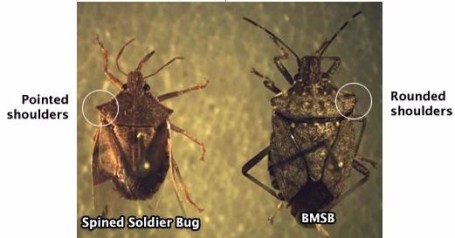
Photo courtesy: stopbmsb.org
Finally, it is important to note that not all stinkbugs are bad; we even have a species native to this area that is considered a beneficial insect – the Spined Soldier Bug. The Spined Soldier Bug looks very similar to BMSB and can be difficult to distinguish in the field. If you are unsure, reach out to a local extension agency who can make the identification for you.
– Holly Walker, Smithsonian Gardens Plant Health Specialist
January 26, 2018 at 10:00 am smithsoniangardens Leave a comment
Identifying Tree Problems & Preparing for Next Year’s Pruning: Winter Tree Inspections
As the brilliant fall colors fade and the north winds blow in the first flurries, activity in the garden may slow. But during this time of year, we can turn our attention toward the trees and learn so much more about their architecture, longevity, and safety with a simple visual inspection of stems and branches previously obscured by lush summer foliage.
No fancy equipment is needed. Winter tree inspections can be done by anyone with a keen attention to detail. A pair of binoculars and a short ladder might help. A tree inspection can be completed by visually scanning the tree from bottom to top, slowly circling 360 degrees around the tree to view as many perspectives as possible. Perspectives can be expanded by viewing the tree from higher vantage points such as near by upper-story windows or even a short ladder.
A winter tree inspection can identify and inventory potential problems and hazards. It is also an excellent precursor for pruning early next year, when young and mid-sized trees can be proactively pruned to discourage and avoid weaknesses in the future.
Winter Tree Inspection Problems Checklist
A few obvious problems may especially reveal themselves in winter. Many of these issues are associated with a damaged and declining tree. A Certified Arborist may need to be called in to examine and monitor these sorts of issues for safety.
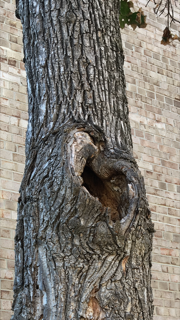
Hollows and Cavities
Injured and damaged trees may decay from the inside until a tree or stem is completely hollow.

Sapwood Damage
Many stressors can damage the vital protective shell of live sapwood just under the bark around the tree. This damage may not heal and will lead to exposed soft, discolored, decaying heartwood underneath.

Dead, Broken, and Hanging Branches
In most any tree, a few small dead, broken, or hanging branches will appear from time to time.
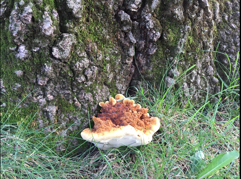
Mushrooms
Anytime mushrooms (i.e. fungal fruiting bodies) appear from the roots or stems of a tree, advanced decay has already set in.

Cracks
Fresh cracks, characterized by a clearly visible split through a stem or branch and the color of freshly split wood, often forewarn a bigger problem.
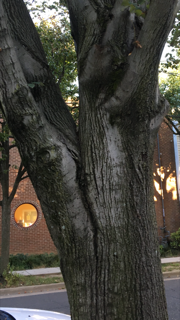
Codominant Stems
Two or more large stems competing for dominance, attached at the same point, and heavily side-weighted are often quite weak. This is especially problematic when the connecting junction is V-shaped rather than U-shaped, leaving little wood remaining for strong attachment of all stems.
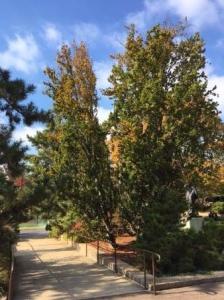
Excessive Lean
Trees with excessive lean, increasing lean, or soil heaving up around the roots may be compromised.
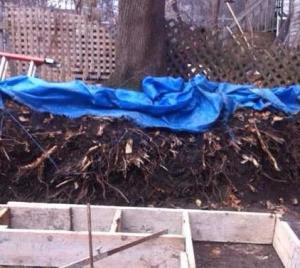
Root Damage
Roots circling around the base of the tree, visible root cutting, or heavy disturbance in the root zone can kill and destabilize trees.
Toward Strong Tree Architecture
The rewarding aspect of proactive, conscientious tree care is that the issues above are largely preventable and should not be common. A winter tree inspection should also provide an opportunity to assess the success of efforts to produce strong tree architecture, and formulate plans for next year’s pruning cycle. The next newsletter will discuss proactive tree pruning for strong architecture and extended tree longevity.
– Jake Hendee, Smithsonian Gardens Arborist
January 12, 2018 at 10:00 am smithsoniangardens Leave a comment
Providing Winter Habitats in the Garden
Most of the birds and some of the insects we find in the Washington, D.C. area migrate to warmer climates during the winter. However, many species stay in the DC Metro region throughout the year and must rely on a favorable habitat for food and shelter.
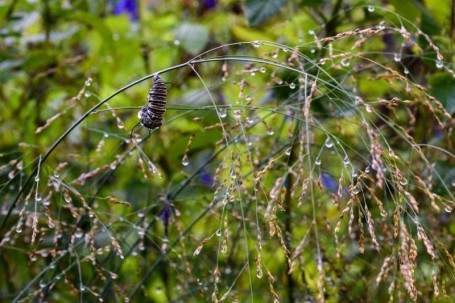
Unfortunately, many natural areas are shrinking due to human development. As a result, gardening choices made by the home gardener and in our public spaces are more essential than ever to the diversity of our wildlife and their continued survival. At Smithsonian Gardens, we strive to provide habitat for wildlife that goes beyond the arrival of killing frost in the fall. Here is why:
Habitat includes the food, water, and cover such as shelter and nesting sites that all living creatures need. Sometimes as gardeners, our need to clean and control our surroundings is overwhelming and the urge to “Mow and Blow” before winter is very strong: perennials and grasses cut back, all leaves removed, and everything cleaned up with the rake and the leaf blower.
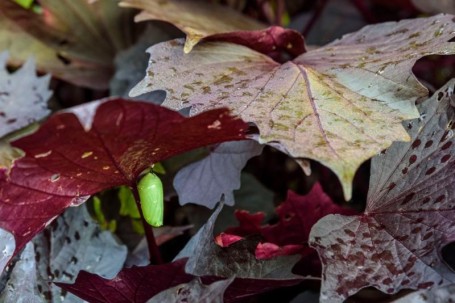
However, many perennials and grasses provide an attractive winter aesthetic at the same time they offer food and shelter for overwintering species. For example, in the Washington, D.C. area, by January or February, many perennials and grasses look sloppy and flattened by ice and snow. In that mash of dead vegetation, many butterfly eggs, caterpillars, and chrysalises will be overwintering and are counting on leaf litter and dead grasses left on the ground to provide shelter.
Birds are another backyard creature that depend on the plants in your yard. Leave the seed heads of coneflowers, black-eyed Susan and grasses as they will provide needed food for foraging. Birds also benefit from the height, the layered effect and the food from many of our native shrubs including the evergreen American holly, eastern redcedar, northern bayberry and southern waxmyrtle (evergreen in town) and inkberry. Deciduous shrubs that also attract a wide variety of bird species include arrowood viburnum, staghorn sumac, winterberry holly, red and black choke cherry. These native shrubs provide overwintering birds the height they need to protect themselves from predators, food in the form of berries and, in the case of evergreens, protection from winter winds.
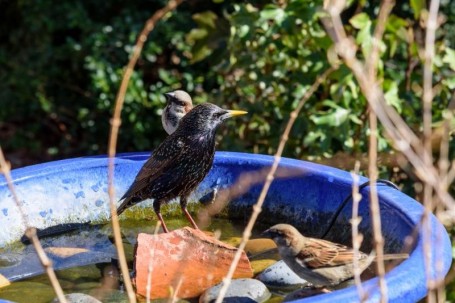
A source of water can be easily overlooked in the garden, particularly in winter. Overwintering birds need access to unfrozen, clean water. If you can make a heated birdbath a possibility, you will be surprised as to the number of winter visitors you get.
To encourage habitat biodiversity, keep in mind food, water and cover. When planning your garden, select native trees, shrubs, perennials and grasses for the bounty they furnish backyard critters. Remember that you do not need to clean the garden as you would your home in preparation for holiday guests. It may look a little unkempt to you, but to a foraging finch or hibernating ladybug, it is paradise.
– Alex Dencker, Horticulturist with images by Elizabeth Miller, volunteer photographer
Mmm, mmm, berry delicious jelly!
Pumpkin-based goodies may be all the rage this time of year, but other plants from the garden also lend themselves to home-made treats.
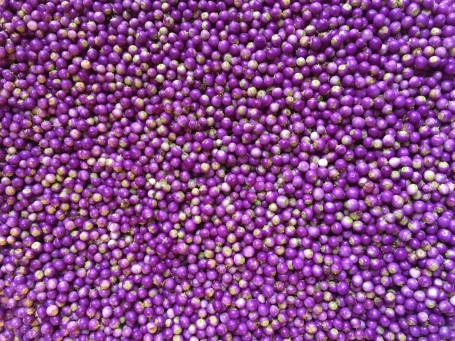
Freshly harvested beautyberries
Callicarpa americana, also known as beautyberry, is now in season with the dazzling fruits that it bears. Beautyberry is typically grown as an ornamental shrub, with its purple drupes (or stone fruit) ripening during early autumn. It addition to the vibrant color that the fruit adds to the garden, it also provides a much appreciated food source for birds during the cooler months of the year. Smithsonian Gardens cultivates beautyberries on the grounds around the National Museum of Natural History for that very purpose. But avian friends aren’t the only ones who can enjoy the fruit; they’re edible for people as well!
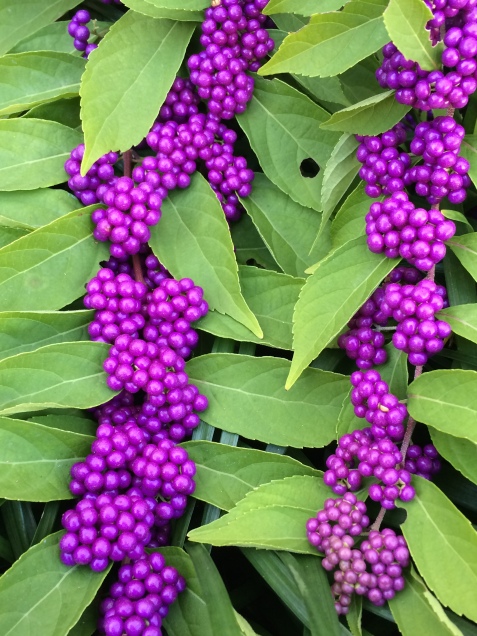
Beautyberry fruit on the plant
Why not try a recipe for beautyberry jelly? The flavor is similar to a mild grape jelly and can be paired nicely with a cheese dish. Harvesting enough berries to make jelly takes time and commitment. But for those of you interested in making this treat from scratch, we have a recipe to share with you:
Ingredients:
6 cups of beautyberries
4 cups of water
¼ tablespoon of butter
4 ½ cups of sugar
1 package (1.75-2 oz.) of pectin
Directions:
- Harvest and clean beautyberries.
- Place berries in large pot on stove along with 4 cups of water. Boil for 20 minutes, remove from heat and cool to room temperature.
- Line a sieve with cheesecloth and place over a bowl. Pour the boiled berries into the cheesecloth-lined sieve; mash the berries and squeeze the cloth to get 3 cups of juice (add water to make 3 cups, if necessary). Discard the mashed berries.
- Pour the juice back into the large pot, add pectin and butter. Bring to a boil, stir in sugar, and continue to boil for 2 minutes. The mixture will start to thicken and set.
- Pour into 6 half-pint jars.
- If the jelly will be consumed within a few days, store in the refrigerator; otherwise, process the jars in boiling water for 5 minutes to sterilize and preserve.
- Serve and enjoy!
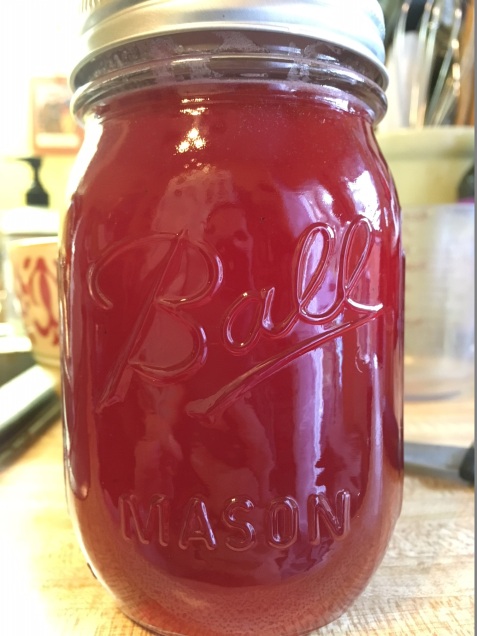
Mmm, jelly!
– Allison Dineen
Munch, crunch, lunch: Hungry caterpillars in the Ripley Garden
For years I have been enamored with the Dutchman’s Pipe family – especially the large showy tropical varieties with their flamboyant flowers. Despite the cool features of these plants they are not palatable to our local Pipevine Swallowtails. Although the plant is in the right family for them to lay their eggs on, the larvae do not feed on it.
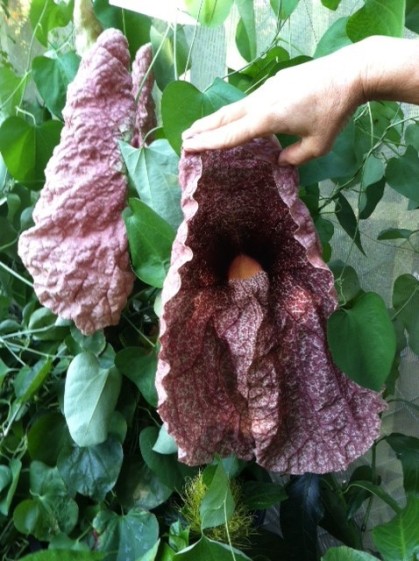
Aristolochia gigantea ssp. Brasiliensis
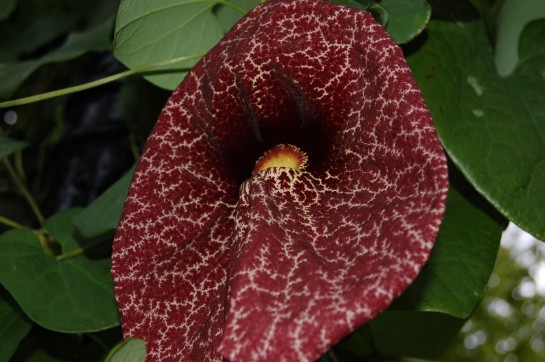
A. gigantea
While I would love to have our native Pipevine in the Ripley Garden, I do not have the space for the east coast native Aristolochia macrophylla which can quickly take up 20-35 feet with each leaf being 12 inches across. It is a big time real estate consumer! Instead, I found that Aristolochia fimbriata is a perfect surrogate host for the wee caterpillars. This plant hails from regions of Brazil and northern Argentina and forms a low mass 6 inches tall by 2 feet wide of heart-shaped foliage with white venation. The flowers of this beauty look like wonderfully small golden pipes with lovely fringed ‘eyebrows’ and are pollinated by fungus gnats. In the D.C. metro area, the plant is deciduous (meaning it sheds its leaves annually), but root hardy and happy in either full sun or dappled shade and is easy to grow from seed or stem cuttings.
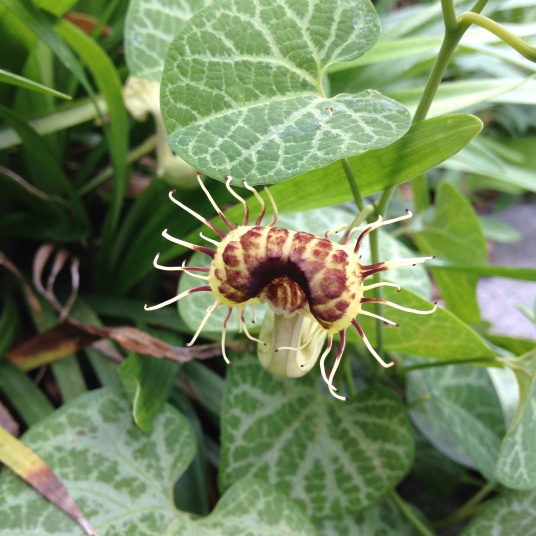
Aristolochia fimbriata

Leaves of Aristolochia fimbriata
I tried a couple of times to establish this plant in the Ripley Garden only to have it eaten to the ground by a single caterpillar. This year, seeds were started at the Smithsonian Gardens Greenhouse Facility and the small plants were installed during the spring so that they had time to put on some growth before the butterflies arrived and started laying their eggs.
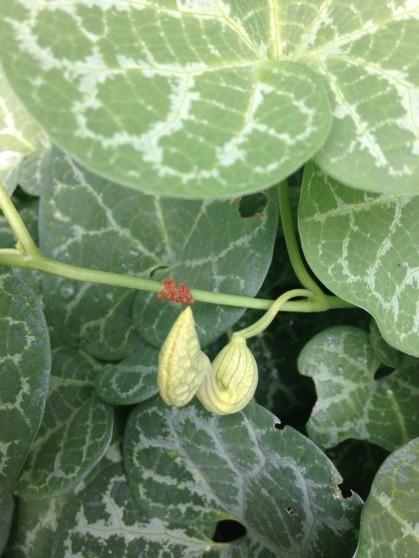
Swallowtail eggs on the A. fimbriata
Once the plants were established, the female Pipevine swallowtails found them and started laying little masses of bright orange eggs. These then hatched out into caterpillars who started munching away on the foliage. The little ones stuck together at first, and then spread out among the foliage. As the caterpillars go through various instars (phases between periods of molting), their appearance changes until they are about 4 inches long, with velvety dark purple-black coloring and bright orange markings down their back side. They will then stop eating and find a place to create a chrysalis, or protective covering, which looks like dried leaves. At this point they will either metamorphosize into an adult butterfly, or stay in the chrysalis to overwinter. The whole process from egg to butterfly takes about 35 days.
I am delighted to see a profusion of Pipevine swallowtail butterflies flitting about the garden knowing that these beautiful creatures have found a safe home in the Mary Livingston Ripley Garden! You too can enhance your garden with this airborne wildlife, just by planting the food they need to survive.
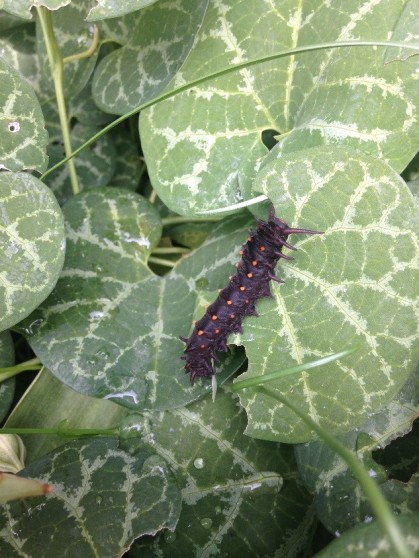
Caterpillars munch away on the Aristolochia foliage until they reach maturity.

Swallowtail butterfly
Janet Draper – Smithsonian Gardens Horticulturist
Back to School with Community of Gardens
The phrase “back to school” conjures up the crisp scent of falling leaves, the feel of a heavy backpack laden with textbooks . . . and the taste of juicy, late season tomatoes? School gardens have a long history in the United States, from their beginnings in the Progressive era to Victory Gardens during the World Wars, to the raised beds and outdoor classrooms found across schoolyards today. School gardens provide students with access to healthy and fresh food and the space to spend time outside learning about science, history, and everything in between.

School garden show hosted by the Summit Garden Club, New Jersey, circa 1900-1920. Hand-colored glass lantern slide, Archives of American Gardens.
As young people across the country head back to the classroom (if they haven’t already), here are a few school garden stories from our Community of Gardens digital archive to inspire teachers and students alike to find time to dig in the dirt and perhaps plant a seed or two this school year:

The Gardens at Chewonki in Wiscasset, Maine.
High school students, staff, and faculty tend the campus gardens and a saltwater farm with chickens, sheep, and a draft horse at this environmental organization on the coast of Maine. The farm produces 15,000 pounds of organic food each year.

Thomas Jefferson Middle School Garden in Arlington, Virginia.
The Thomas Jefferson Middle School Garden
This Virginia school garden (right in our own backyard in the Washington, D.C. metro area!) was created by a local Girl Scout troop in 2012. Today it is a community resource, playing host to classes and community events, and a portion of the produce supports the Arlington Food Assistance Center (AFAC).
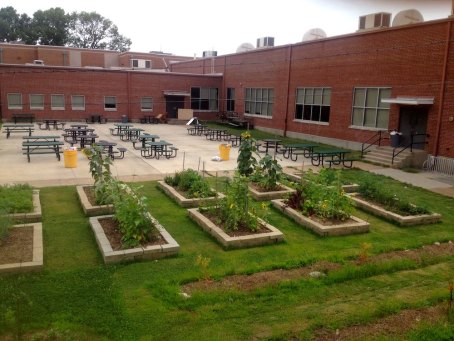
The Spartan Garden at White Station High School in Memphis, Tennessee.
The Spartan Garden at White Station High School
A committed group of high school students in Memphis built their school garden from the ground up, raising money, negotiating with school administrators for space, and building raised beds, an herb garden, and an outdoor seating area.
Teachers, grow your curriculum toolkit with these online resources from Smithsonian Gardens for learning about—and celebrating—gardens this school year:
- Grown from the Past: A Short History of Community Gardening in the United States: an online exhibit from Community of Gardens with present-day and historical images.
- Cultivating America’s Gardens: the online version of the physical exhibit now on view at the National Museum of American History, a collaboration between Smithsonian Institution Libraries, Smithsonian Gardens, and the Archives of American Gardens.
- Smithsonian Gardens Green Ambassador Garden Design Challenge: Build your own school garden or greenspace with our handy guide, and become a Smithsonian Gardens Green Ambassador.
- Community of Gardens: Does your school or club already have a school garden? Share your story with the Smithsonian Institution by contributing your story to the Community of Gardens digital archive.
-Kate Fox, Smithsonian Gardens educator
September 5, 2017 at 8:00 am smithsoniangardens Leave a comment
Transforming the Heirloom Garden into Common Ground: Our American Garden
The National Museum of American History has welcomed visitors to its doors since 1964. The landscape at the entrance consists of raised stone planters that hug the building. In the sixties, these beds were ‘green and clean,’ a mass of nondescript groundcovers. Over the years the creative vision of Smithsonian Gardens horticulturists brought a more diverse array of plantings, including a bounty of perennials and cottage garden flowers. Thus, the Heirloom Garden was born.
Opened in 1998, the Heirloom Garden highlighted plants grown in American gardens before 1950. These included old-fashioned, grandmother’s favorites and pass-along perennials like irises and blackberry lily, as well as spring-flowering bulbs like crocus, daffodils, and tulips. The garden featured plants that Thomas Jefferson grew, Dahlias that made the All-America Selection cut, and heritage roses.

Heirloom Garden, 2012
The biggest challenge turned out to be interpreting the garden. As we researched the definition of “heirloom,” we discovered no clear answer. After consulting with experts and a myriad of published resources, we found that roses, bulbs, and annuals each had to meet a different standard to be considered heirloom. Depending on the criteria, plants had to be 50, 75, or 100 years old to make the grade. Sometimes newer varieties were included, as long as they were open-pollinated (pollinated by pollinators, not by the efforts of humans). In vegetable gardening, heirloom plants such as tomatoes must be open-pollinated as opposed to hybridized (two parent plants are crossed to produce a plant with specific traits).
Try putting all that information on a sign or explaining it in a tour! We needed a new approach. How could we best share the stories of plants and their importance to people in this country? While we were reimagining the garden, curators from the National Museum of American History were researching and planning their own exhibition, Many Voices, One Nation, which asks the question, “How did we become US?” As they were nearing the end of their choices of objects and themes, the curators reached out to Smithsonian Gardens. Could we make a garden that echoed the themes of the new exhibition?

Eryngium zabelii ‘Big Blue’
The resounding answer was yes! Smithsonian Gardens staff met with museum staff to collaborate on what would become a companion garden exhibit. Eventually, we chose four themes to capture the essential connections Americans have made with plants. Plants evoke Memory through flavor, fragrance, beauty, or herbal traditional use. Likewise, many cultures in the United States use special Healing or medicinal plants. Ingenuity and Discovery rounded out the themes that define how people throughout America’s history discovered and used plants and how Americans today continue to depend on them in new ways. These themes have been translated into interpretive sign panels for the garden, now called Common Ground: Our American Garden.
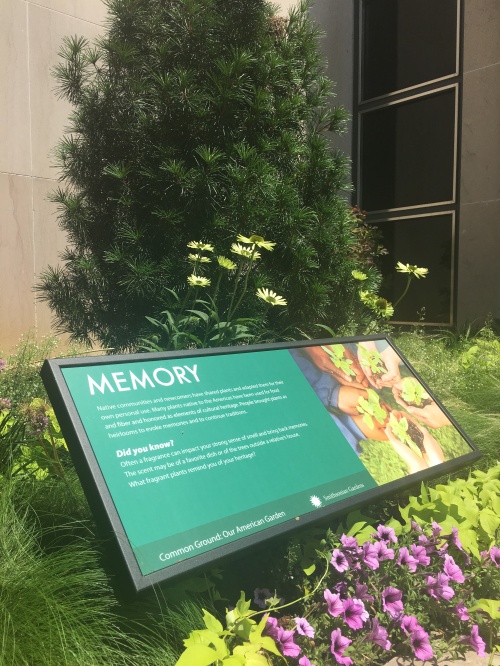
New interpretive panel for the garden.
Our gardeners and horticulturists took special care to prepare the new garden, salvaging plants from existing raised beds, scraping and removing soil around existing crape myrtle trees and replacing it with an engineered soil, as well as adding organic fertilizer and a topdressing of fine mulch. We “limbed up” or pruned 24 crapemyrtles and tucked small, shade loving “plugs” of perennials such as golden sedge, columbine, and sweet woodruff between them. We followed with over 500 Mexican feather grass and more than 1500 flowering perennials such as Echinacea (in orange, purple and green), bee balm, catmint, blanketflower, and butterflyweed.
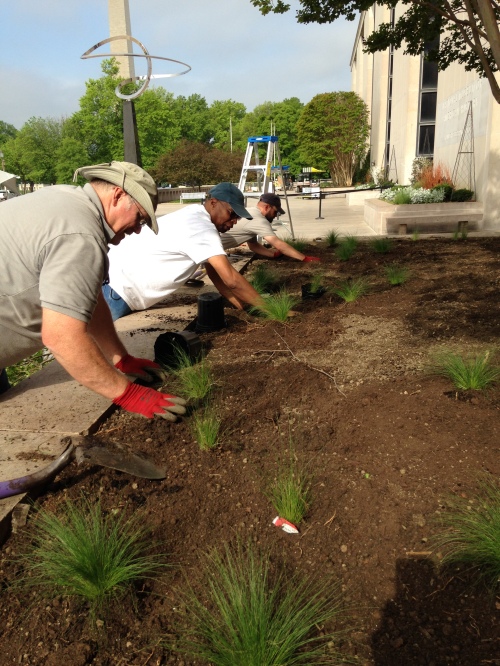
Smithsonian Gardens staff planting for the new garden.
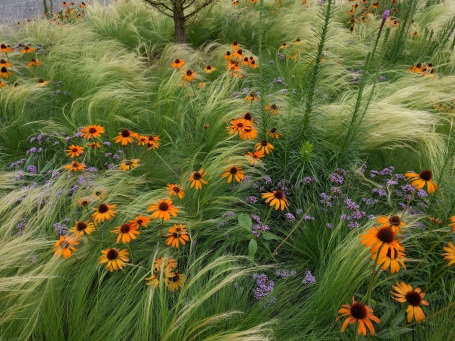
Mexican feather grass and Echinacea
The new garden is a bright stretch of raised beds with native and exotic perennials, revealing gems of useful plants and garden history along the visitor’s path. We worked to create a flowing, cohesive design. One team member brought the idea of color-blocked beds to the table, making each bed a different color. Another brought the idea of a cohesive planting mix of grasses and prairie flowers. The result is a series of orange beds punctuated by beds of blue, green and purple. Each outset bed features the same vibrant hot color while each inset bed shows a receding cool color.

Sketch for the southwest terrace, illustrating the color blocked design.
After 2 years of planning, the garden opened on June 28th in conjunction with the opening of the museum’s new wing, The Nation We Build Together, which showcases the exhibition Many Voices, One Nation. The garden now feels complete, yet it is never finished, as new seasons will continue to bring change.
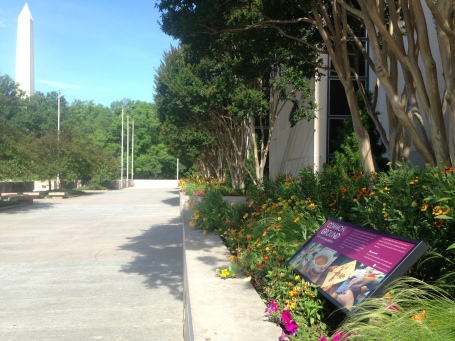
Completed garden
– Erin Clark, Smithsonian Gardens Horticulturist
